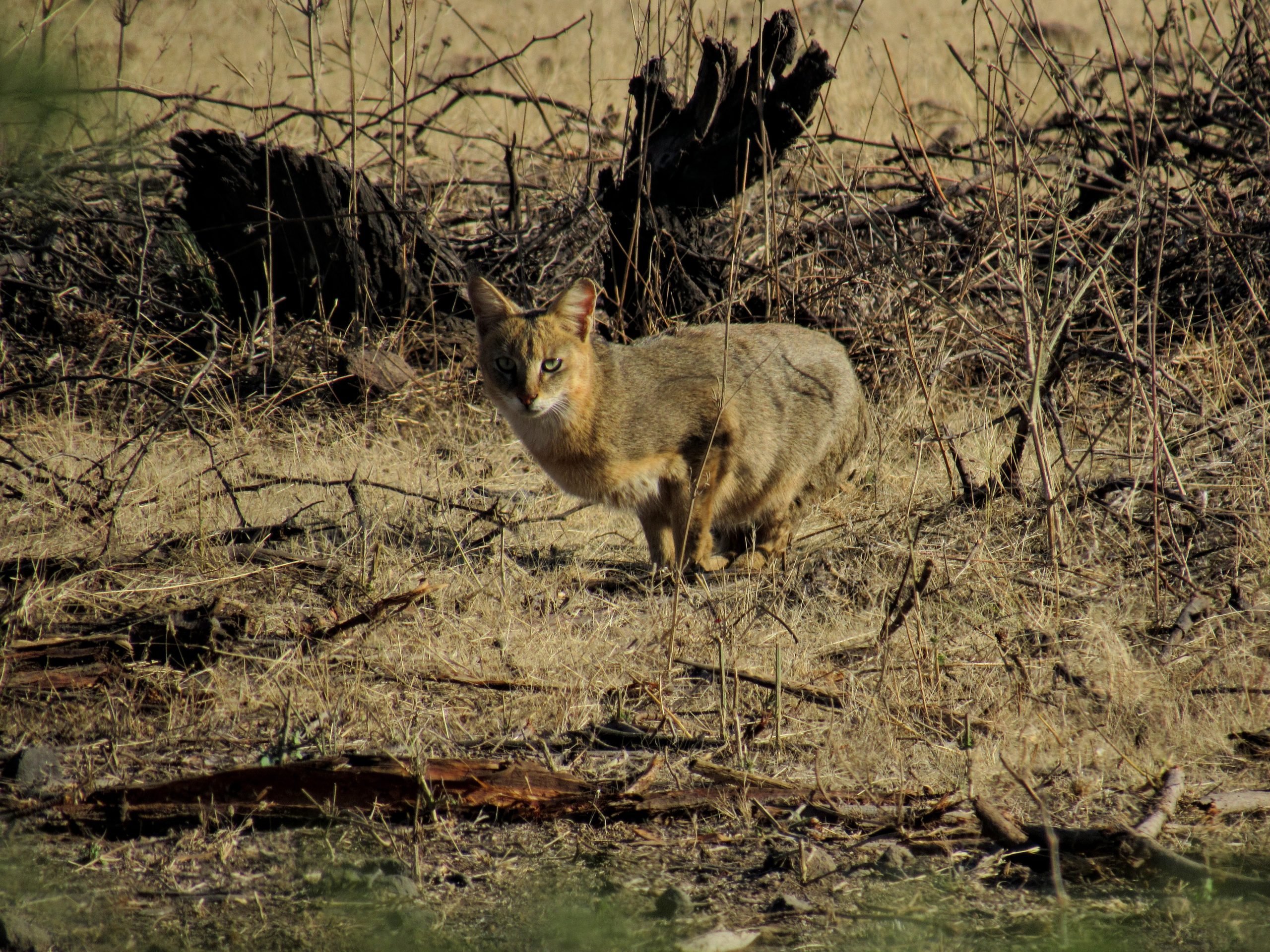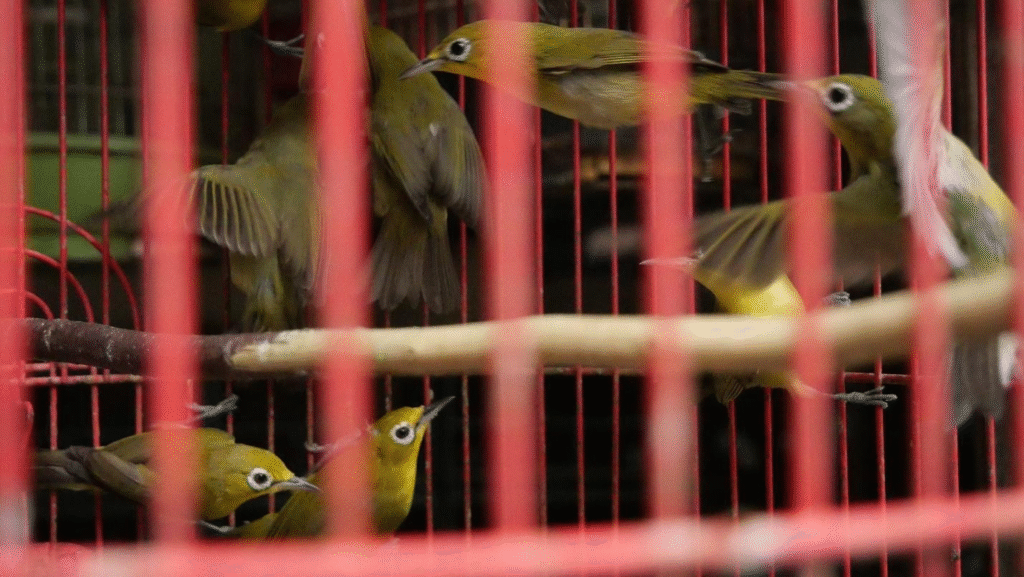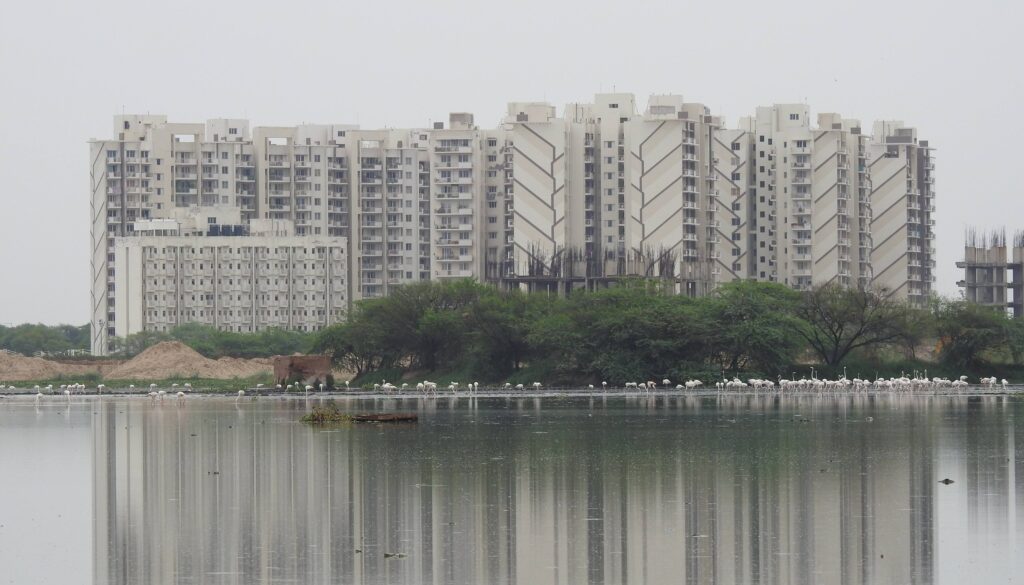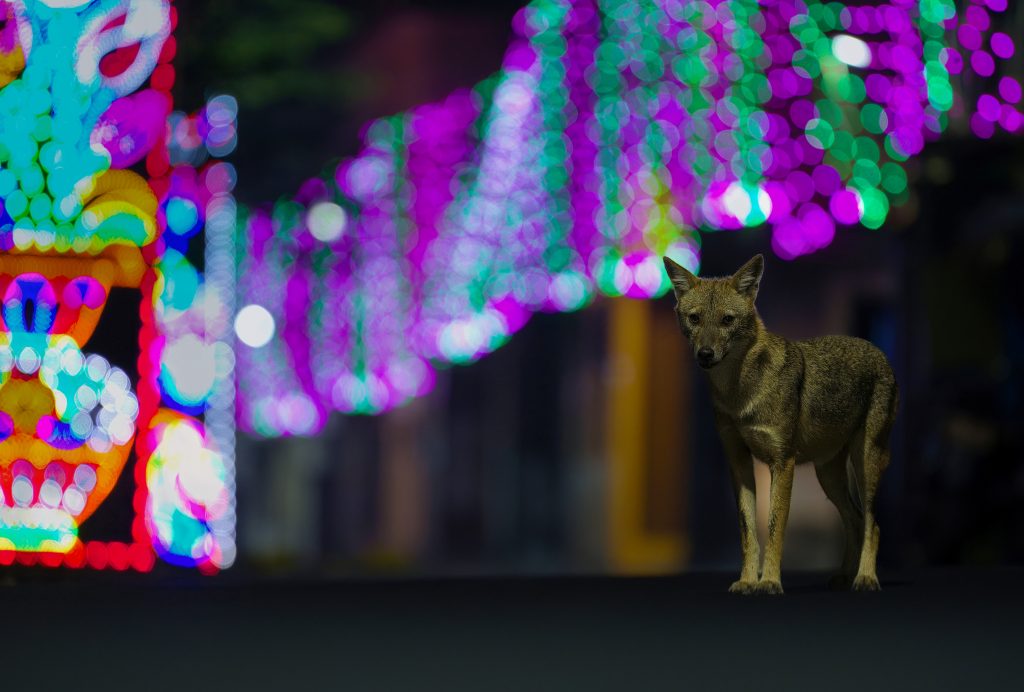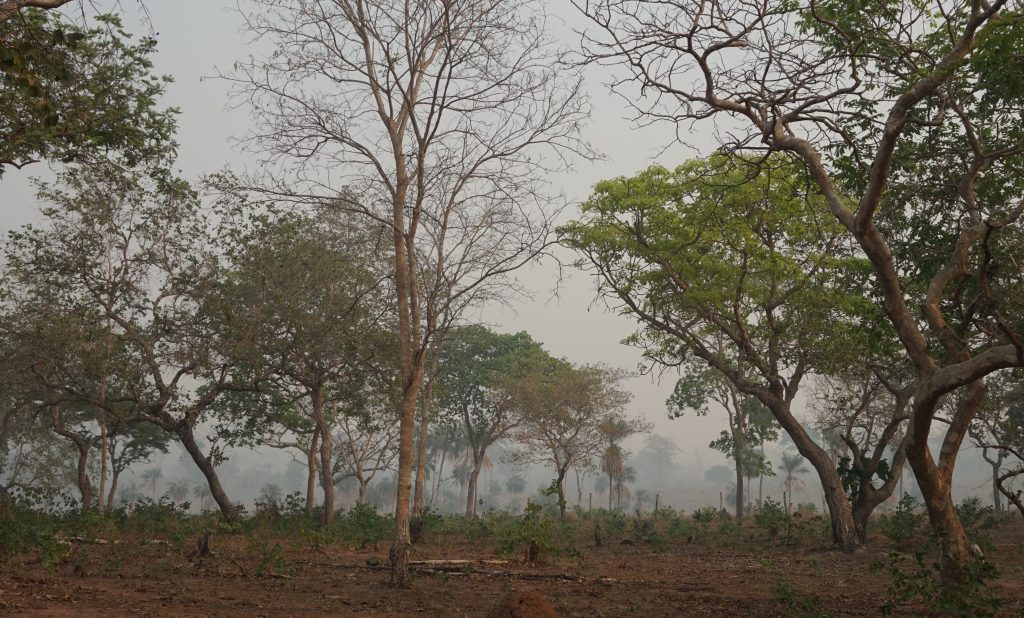Featured Image: sighting of a jungle cat during 2022 fieldwork
‘Kutch’—what imagery comes to mind when you think of this place in the north-western frontier of Gujarat in India? Perhaps the White Rann—a salt desert, renowned for its immense size. I envisioned this as well. Hailing from eastern India, I could not fathom how the inhospitable desert with long spells of drought and scorching days with no shade to seek refuge under, could sustain any life at all. Kutch had always remained a distant mystery to me.
In 2019, an internship took me to the Banni grasslands towards the south of the White Rann. That was when I realised that the ecosystems here were not a monolith; they weren’t cut from the same cloth. Travelling from north to south of the Kutch district, it is impossible to miss the stark shift from the desolate salt desert to the expansive grasslands, then onto wooded hills and ravines, and finally descending to meet the coastline.
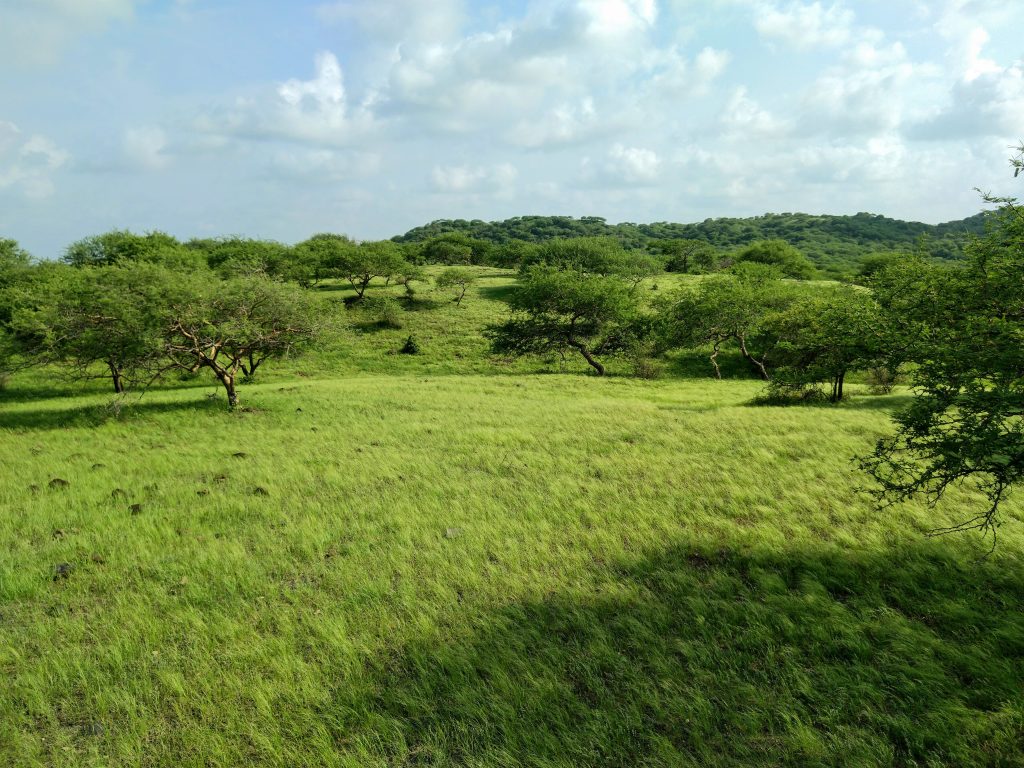
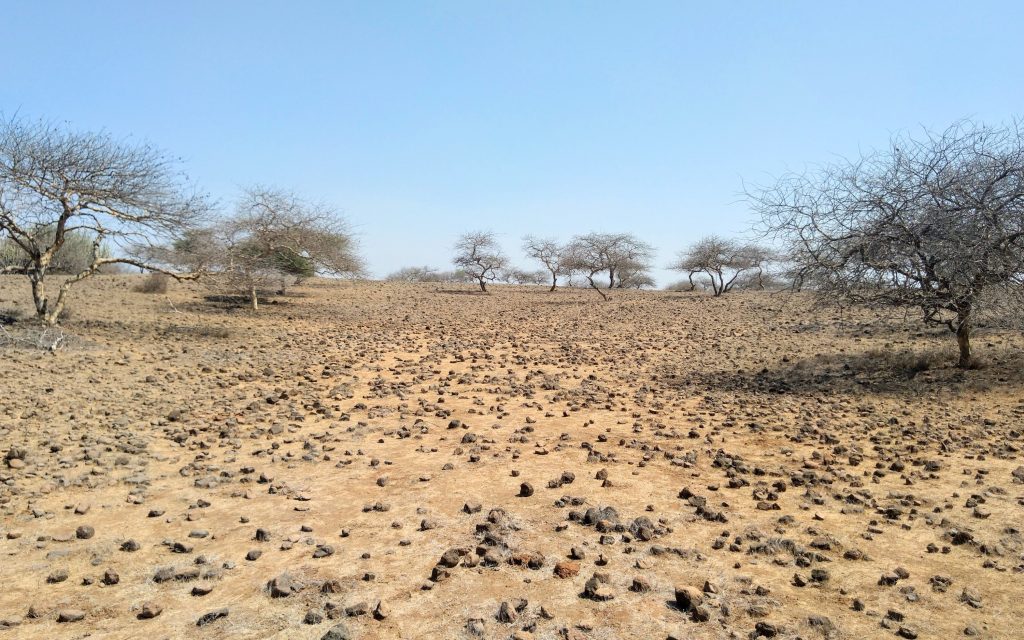
The project that I was interning with focussed on meso-carnivores—the smaller yet more diverse and widely distributed relatives of large charismatic carnivores like tigers and lions. Kutch is known to be a haven for meso-carnivores such as jackals, foxes and small wild cats, among others. What adds to its intrigue is that it is also under substantial human use—by pastoral communities such as Maldharis and Rabaris, who have been following their traditional livelihood practices for hundreds of years, with their livestock (cows, buffaloes, sheep, goats and camel) and dogs. My work was largely restricted to a small part of the Banni and I was disheartened that I did not see a single meso-carnivore during my time there. Yet, I was also determined to return, to explore the wider landscape and search for these elusive animals.
Fast forward to 2022, I got the opportunity to return to Kutch. This time around, I was conducting my own research as part of my Master’s dissertation fieldwork in the hills and ravines. My field timeline spanned the dry season—the harshest period in the desert ecosystem when animals must scramble for whatever limited resources are available. My previous experience in this landscape had offered a glimpse of how crucial the land was for humans beyond traditional pastoralism.
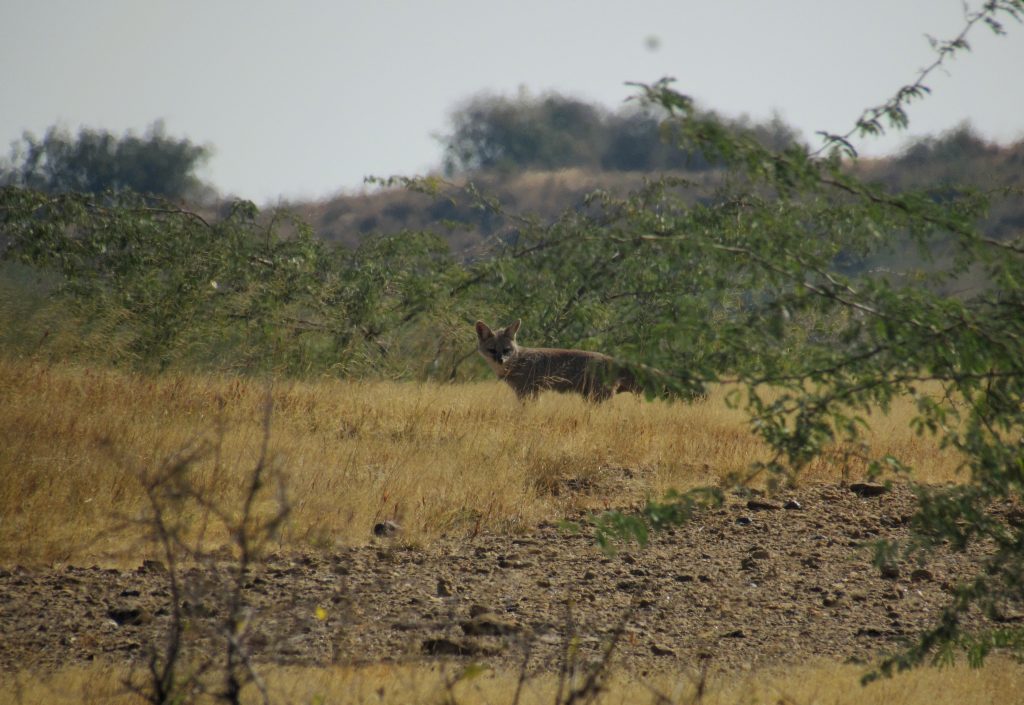
Agriculture was rapidly becoming a vital means of livelihood, infrastructure projects like mines and renewable energy farms (wind and solar) were on the upswing, and fresh roads were being carved out to facilitate these projects. Pursuing these ventures is relatively easy as much of this landscape retains the colonial tag of a ‘wasteland’ under land use policy. This means that while meso-carnivores may be protected species as per Indian law, their habitats are not. My goal was to understand how numerous species of meso-carnivores managed to share the depleting habitat resources in such an environment. But first, I had to find them.
I went fully equipped with a team of interns and field collaborators, armed with some knowledge of carnivore natural history, camera traps and scat sampling kits. After spending the first few weeks of January 2022 liaising with local villagers, pastoralist communities and the Forest Department, we set out on our search for the meso-carnivores.
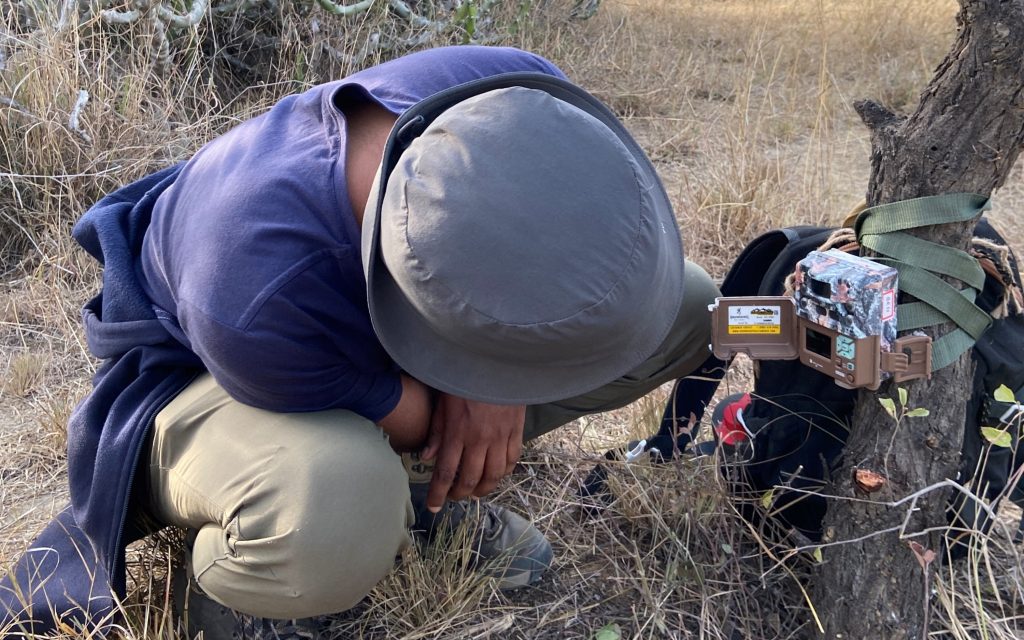
While I had to wait to go back to the lab in Bangalore to genetically ID the scats, the camera traps yielded instant results. In a matter of a few days, we already had multiple sightings and camera-captures of the commoners—golden jackal, jungle cat and Indian fox. We also started encountering smaller carnivores like mongooses and civets, and wild herbivores—chinkara and nilgai. And of course, lots of humans, livestock and domestic dogs. But the rarer species like desert cats and ratels (honey badgers) eluded us.
During one of our routine surveys the following month, we stumbled upon an intriguing find—a set of distinctly ‘floral’ pugmarks, a clear indication that a striped hyena had traversed the same path as ours. We strategically placed a camera trap along the trail, hopeful that the hyena might use the path again. Two days later when we returned to retrieve the camera, it was nowhere in sight. The rope securing it to the tree had been torn. Panic set in––had the camera been stolen?
After a thorough search, we found the camera around 70 metres from the original spot. It was damaged and bore tooth marks all over. We excitedly returned to the field station to identify the culprit. As a series of images were unravelled on the computer, it became evident that a striped hyena had indeed encountered the camera during its early morning stroll. Intrigued by the device, it had tried to investigate further, resulting in the camera being dismantled and chewed up. Eventually, it seemed to have lost interest, dropped the camera and moved on.
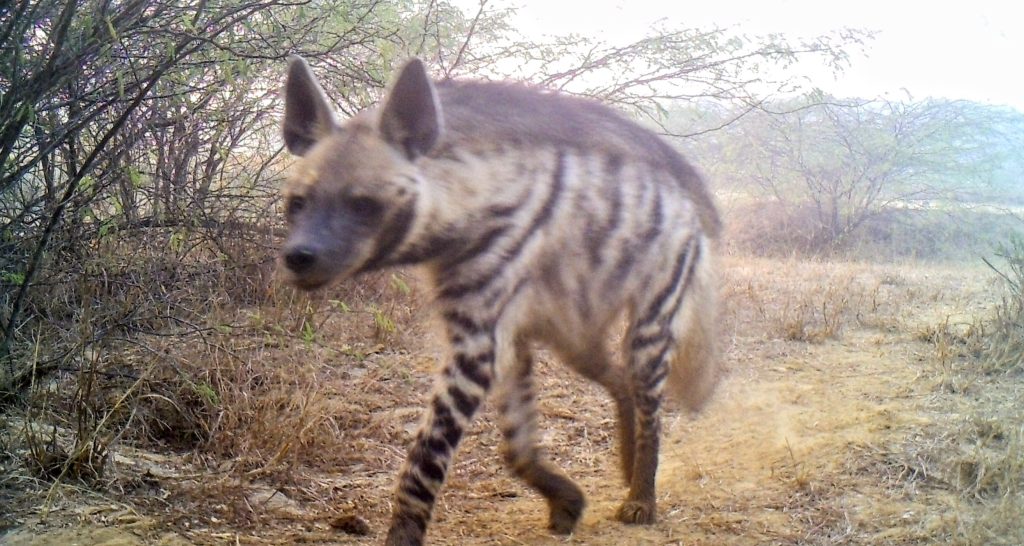
On another day, while climbing up and down in a dry ravine, we chanced upon a scat with an unusual appearance. Investigation of its contents revealed that it belonged to a carnivore that had had a porcupine meal—the scat was full of sharp quills! We were intrigued. What carnivore would risk the sharp quills of a porcupine? Once again, we deployed a camera trap and left it for a couple of days. The first several photos were of hares, porcupines and jackals. Then came the night-time footage of a short, stocky creature—black in colour, sporting a dorsal band of light grey hair. It was a ratel! And as the subsequent photos popped up on the screen, we saw that there was not just one, but two of them together.
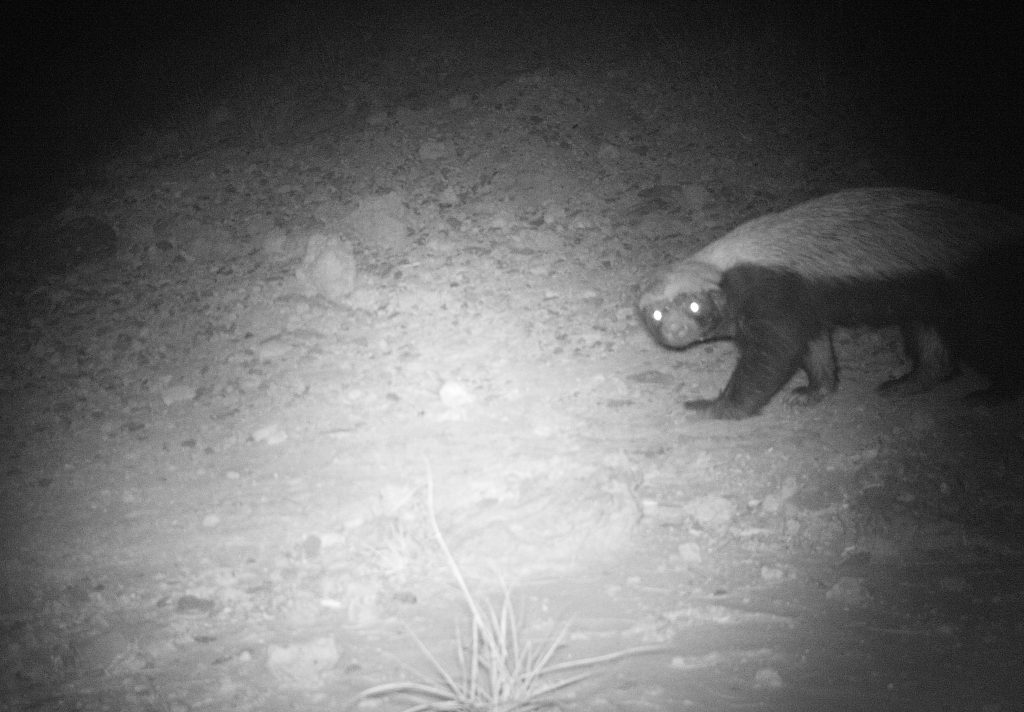
As the days progressed, other rare meso-carnivores like the desert cat and rusty-spotted cat started showing up in our camera traps. But the rarest of them all was still missing. With February nearing its end, the pleasant days of desert spring transitioned into the scorching days of summer heat. The
unbearable heat, coupled with the seemingly lower prospects of finding any newer species, was tiring us out faster than before. Giving up wasn’t an option, and so, with a substantial part of the landscape yet to be surveyed, we soldiered on.
It was now March and we were out checking our camera traps. It was two in the afternoon as we reached the last camera for the day. The sun was at its highest, the air was warm and we were sweating profusely. On reaching a camera, I would always check as many pictures as possible right away. On the small screen of the camera, I struggled to identify the animal in the very first picture. It did not look like anything that we had recorded before. And as my vision adjusted to the glare, I could not believe my eyes. The lean body on long limbs, large ears sporting prominent tufts of black hair––we had photo-captured the caracal, the rarest meso-carnivore of the Indian desert. My teammates and I were thrilled beyond words. The unexpected but fortuitous encounter rejuvenated us and the subsequent two months of intensive fieldwork flew by with a new sense of hope and enthusiasm.

During my last few days in the field, I could not help but re-think how wrong I was about deserts being ‘inhospitable’. I had recorded a whopping 13 species of carnivores during my surveys. But how do these species adapt to the extreme climate? At the same time, how will the expanding agricultural farms, the roads, the mines, the solar and the wind farms impact this landscape and its carnivores? How can we protect this region and its wildlife without excluding its people? I left Kutch with these questions burning in my mind, hoping to return soon to tackle their answers.
Further Reading
David, P. 2023. In Jaisalmer: gone with the windmills. People’s Archive of Rural India. https://ruralindiaonline.org/en/articles/in-jaisalmer-gone-with-thewindmills/?s=03. Accessed on 27 February, 2024.
Kadambari, D. 2014. India’s Wild West. Personal Blog. https://kadambarid.in/wildlife/wild_kutch.html. Accessed on 27 February, 2024.
Unakar, S. 2018. The Dark Side of Greener Kutch. GOYA. https://www.goya.in/blog/the-dark-side-ofgreener-kutch. Accessed on 27 February, 2024.
Originally published on 08 May 2024
